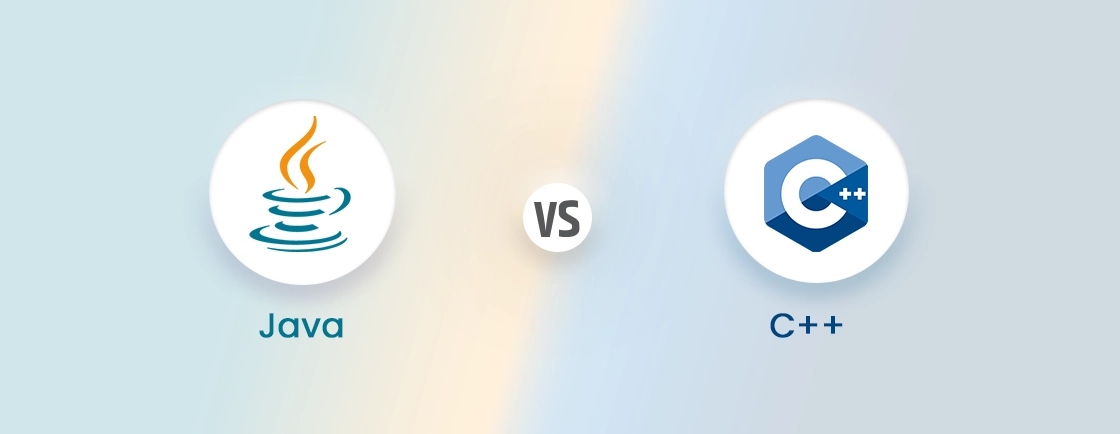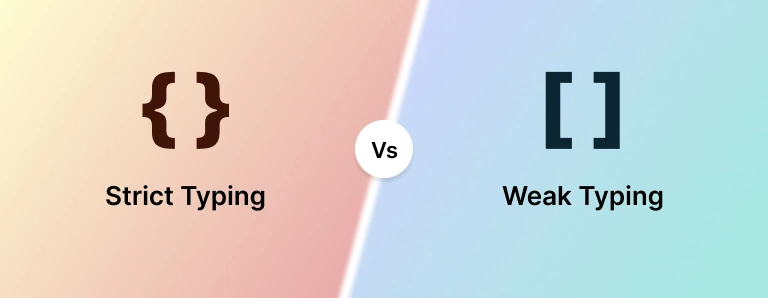Table of Contents
Feeling overwhelmed to choose the right development approach for your project? With so many options available, it’s important to understand the key differences between them. This blog post will dive into these low-code and traditional development. So you can make the right decision for your specific needs.
In software development, both low-code and traditional approaches offer distinct advantages and disadvantages. Traditional development helps you with complete control and customization. Where on the other hand, low-code platforms streamline the process through pre-built components and visual interfaces.
Following the blog step-by-step, we’ll shed light on how a reputable developer bifurcates these approaches. Also, by the end of the blog, we’ll answer some FAQs breaking down the most raised queries. So, buckle up and get ready to explore the in-depth comparison of Low Code vs Traditional Development.
What is Low Code Development?
Low-code development is an approach to building software applications that minimizes the need for traditional hand-coding. Instead, it uses drag-and-drop features and pre-built components to streamline the development process. That means faster and more user-friendly application creation, even for individuals with limited coding experience.
- Visual Interfaces. Low-code platforms use drag-and-drop functionality and pre-built components. It allows users to design application layouts and workflows, similar to building with blocks.
- Logic Configuration. Low-code platforms offer tools like decision trees and pre-defined functionalities. It benefits in configuring how the application responds to user actions and data.
- Pre-built Integrations. Low-code platforms often provide access to pre-built connectors and APIs. That simplifies the integration of external data sources without requiring in-depth coding knowledge.
Overall, low-code development helps individuals with varying technical skill sets. This enables them to contribute to building scalable applications. It also fosters faster innovation and improves software development.
What is Traditional Development?
Traditional development is often referred to as waterfall development. It is a structured methodology for building software applications. Throughout the process, it follows a linear, phased approach where each stage is completed before moving on to the next. This approach prioritizes planning, documentation, and control throughout the development lifecycle.
- Phased Approach. The development process is divided into distinct phases. It includes requirements gathering, design, development, testing, deployment, and maintenance. Each phase has specific deliverables and must be completed before moving on to the next.
- Detailed Documentation. Extensive documentation is created throughout the development process, outlining requirements and test cases. This documentation serves as a reference point for all and ensures clear communication of the project goals.
- Dedicated Roles. Traditional development typically involves a team of specialists with distinct roles. This separation of concerns allows for increased focus and expertise within each phase.
- Rigorous Testing. Traditional development highlights testing throughout the development lifecycle. Unit testing, integration testing, and system testing are employed to identify and address defects before deployment.
Thus, traditional development offers a structured and predictable approach. But, it can be less adaptable to changing requirements. This can lead to and may struggle to keep pace with the rapid evolution of technology.
Difference Between Low Code vs Traditional Development
Low-code and traditional development offer distinct approaches to software development. Understanding these differences is important for choosing the most suitable method. Here’s a comparison table highlighting the same:
| Factor | Low-Code Development | Traditional Development |
|---|---|---|
| Coding Requirement | Minimal to no coding is required | Extensive coding expertise is necessary |
| Development Speed | Faster development due to pre-built components and automation | Slower development due to manual coding and testing |
| Flexibility | A bit less flexibility due to pre-built components and platform limitations | Highly flexible, allows for complete customization through coding |
| Scalability | May have limitations in scaling to handle very high user volumes | Generally more scalable due to custom-built architecture |
| Learning Curve | Easier to learn, suitable for individuals with limited coding skills | A steeper learning curve, requires specialized knowledge and experience |
| Maintenance | Easier to maintain due to pre-built components and platform updates | Requires ongoing maintenance and updates by developers |
| Cost | Lower cost due to reduced development time and resources | Can be more expensive due to the need for specialized developers |
In conclusion, low-code development is ideal for projects with:
- Simple to moderate complexity
- Quick turnaround times
- Limited internal coding expertise
While traditional development is better suited for:
- Highly complex and unique applications
- Strict performance and security requirements
- Full control and customization needs
For tailored solutions, consider consulting a web development agency with expertise in both low-code and traditional development approaches. They can help you assess your specific needs, identify challenges, and recommend the best path to success.
Detailed Comparison Between Low Code vs Traditional Development
In software development, two distinct approaches have emerged: low-code and traditional development. Both cater to the creation of software applications. However, their methodologies and target audiences differ.
This comparison dives into the key aspects of each approach. Highlight their strengths and weaknesses to help choose the optimal development strategy for your needs.
1. Project Complexity
- Low-Code. Ideal for simple to complex applications. If you have well-defined requirements then analyzing pre-built components will be a plus. Complex logic or unique features may need extra coding or exceed platform limitations.
- Traditional. Best suited for complex projects requiring extensive customization and intricate functionalities. Offers complete control over code and architecture to address unique needs.
Winner: Traditional Development
2. Development Resources
- Low-Code. It requires minimal to mid-level coding expertise. Experienced developers or business users with limited technical knowledge can contribute to development. May still require involvement of professional web developers for complex logic or integrations.
- Traditional. Demands extensive coding experience in relevant programming languages and frameworks. Also, a dedicated development team with expertise in various aspects of the software development lifecycle.
Winner: Low-Code Development
3. Development Speed
- Low-Code. Offers faster development due to pre-built components, drag-and-drop functionalities, and automation. Visual development environments facilitate rapid prototyping.
- Traditional. Generally slower development due to manual coding, extensive testing, and a phase-based approach. Changes may require revisions throughout the development cycle, impacting timelines.
Winner: Low-Code Development
4. Scalability Requirements
- Low-Code. May have limitations depending on the platform’s architecture and scalability capabilities. Scaling may require additional licensing to different platforms for high-traffic applications.
- Traditional. Offers high scalability as the application is custom-built to handle growth and evolving demands. Enables adjustments to infrastructure and code to accommodate an increased user base.
Winner: Traditional Development
5. Customization Flexibility
- Low-Code. Offers limited customization compared to traditional development. Customization options depend on the platform’s capabilities and pre-built components available.
- Traditional. Provides extensive customization flexibility. Developers have complete control over the codebase. This enables the application to meet unique needs. Also, it lets you integrate functionalities not available in pre-built components.
Winner: Traditional Development
6. Security and Integration
- Low-Code. Security features and integrations may be pre-defined and limited depending on the platform. It might require an evaluation of the platform’s security posture and available integration options.
- Traditional. Offers greater control over security as developers can implement custom security measures. Enables integrations with external systems and services based on specific requirements.
Winner: Traditional Development
7. Cost
- Low-Code. Comparatively cost-effective with subscription-based pricing or one-time licensing fees. This reduces development costs compared to traditional development.
- Traditional. Can be more expensive due to developer salaries, project duration, and infrastructure costs. Cost may increase with the complexity of the project and ongoing maintenance requirements.
Winner: Low-Code Development
Verdict
For simpler projects with limited coding resources and short timelines, low-code shines. Its ease of use, speed, and lower cost make it an attractive option. However, it may struggle with complex projects. Especially for applications requiring intricate functionalities or extensive customization.
In such scenarios, traditional development remains supreme. It offers full control over the codebase, enabling you to tackle complex logic and integrate with other systems. While it requires more resources and time upfront, it provides the flexibility to scale and adapt to future needs.
Ultimately, the “winner” still relies on your specific project requirements, resources, and priorities.
How to Choose Between Low Code and Traditional Development?
Selecting the optimal development approach for your project requires careful consideration. Here are several key factors:
1. Project Complexity
For simpler projects with well-defined functionalities, low-code development can leverage pre-built components. However, complex applications requiring extensive customization may need traditional development.
2. Time to Market
Low-code development often boasts a faster journey to market. This is due to its pre-built components that streamline development. Traditional development, with its emphasis on manual coding, has a longer development timeline.
3. Customization Needs
Low-code development offers limited customization options, relying on pre-existing components. Where on the other hand traditional development may need additional coding. But it does offer complete control over the codebase. It also enables extensive customization and tailoring to unique requirements.
4. Security Considerations
While low-code platforms often have built-in security features, the level of control may be limited. Check the platform’s security posture before implementation. Traditional development allows for robust security implementation. This enables you to tailor security measures to specific needs.
5. Long-Term Maintenance
Low-code platforms handle most updates and maintenance, reducing ongoing costs for basic functionality. However, traditional development necessitates ongoing maintenance. It also demands code updates to address user needs and security vulnerabilities.
By considering these factors, you can decide on the development approach. Remember, there’s no one-size-fits-all solution. The optimal development approach depends on your unique project landscape.
Consult with our web development agency and we’ll analyze your projec requirements to proceed with the best-possible solution.
Conclusion
The battle between low-code and traditional development isn’t a zero-sum game. Both approaches offer distinct strengths and cater to different project requirements. Consider understanding your project’s complexity, timeline, and security considerations. This will help you to decide on the development approach that best aligns with your goals.
Remember, there’s no single “best” option. The optimal path depends on the unique landscape of your specific project. When in doubt, seeking guidance from experienced professionals can be invaluable.
Need tailored consultation for your project requirements? Let our hire web developers with us and get optimal solutions for your unique needs.
FAQs About Low Code vs Traditional Development
Is low-code better than web development?
Low-code isn’t “better” than web development. It offers a faster, easier approach for simpler applications. But may lack the flexibility and customization for complex projects.
How fast is low-code development compared to traditional development?
Development speed varies, but low-code can be faster due to pre-built components and visual interfaces. Yet, the project’s complexity and required customization can impact the time difference.
Is low-code the future?
Low code is likely to play an important role in the future. It will benefit in evolving app development and enable experienced developers to contribute. But, traditional development will remain crucial for complex custom applications. Where full control and intricate functionalities is required.
Compare the best tech side by side.
Our in-depth comparisons help you see features, pros & cons, and choose the right tools confidently.





